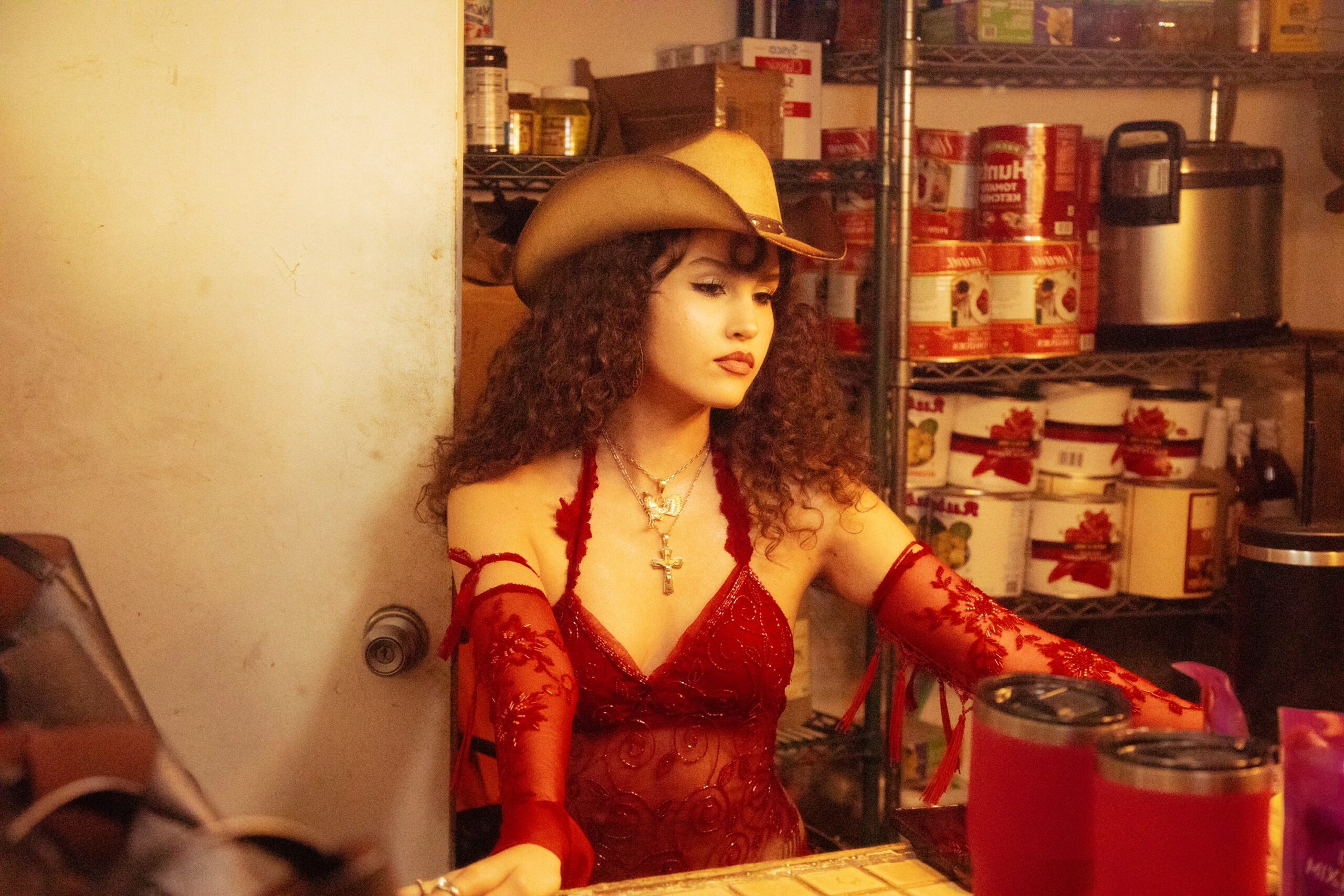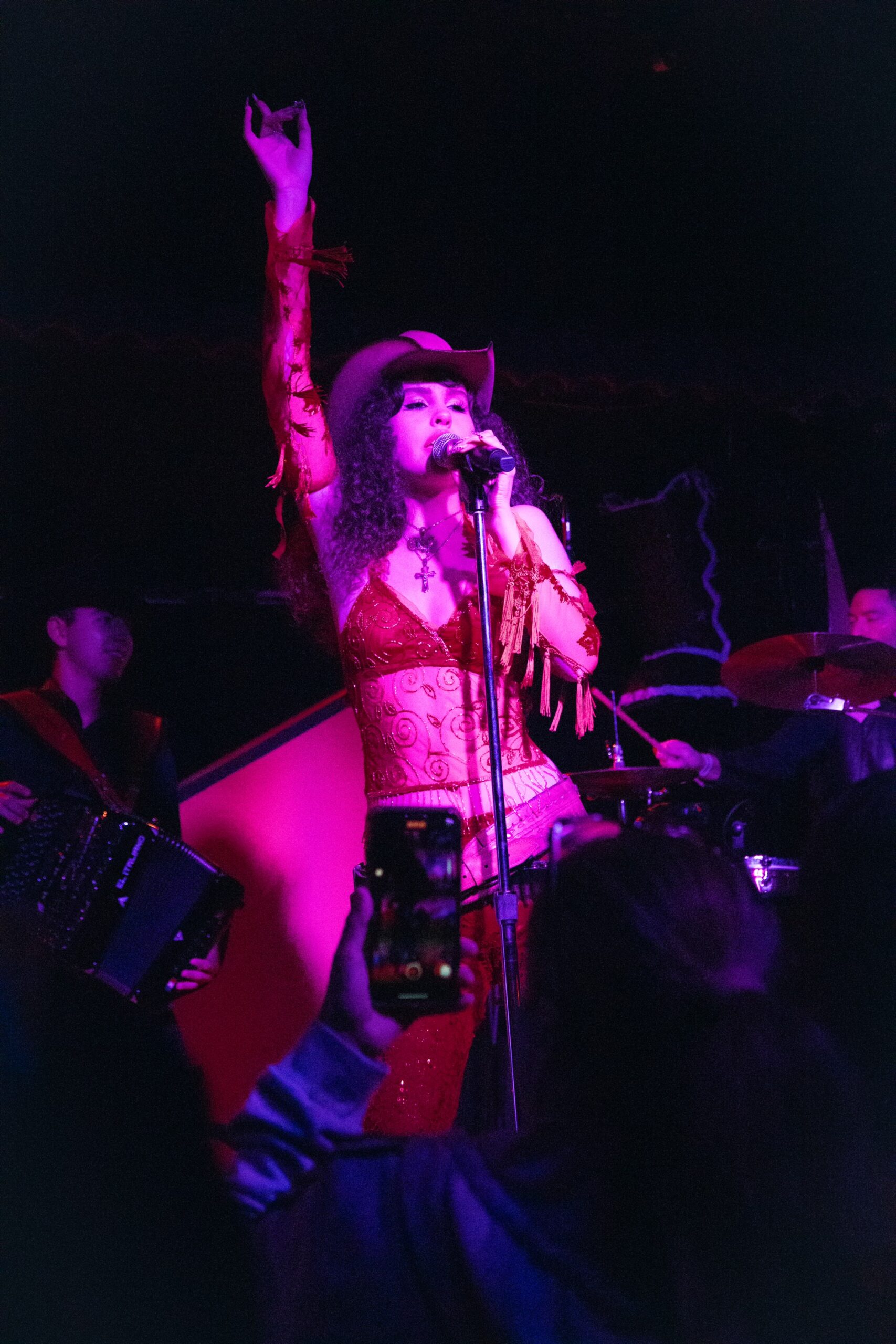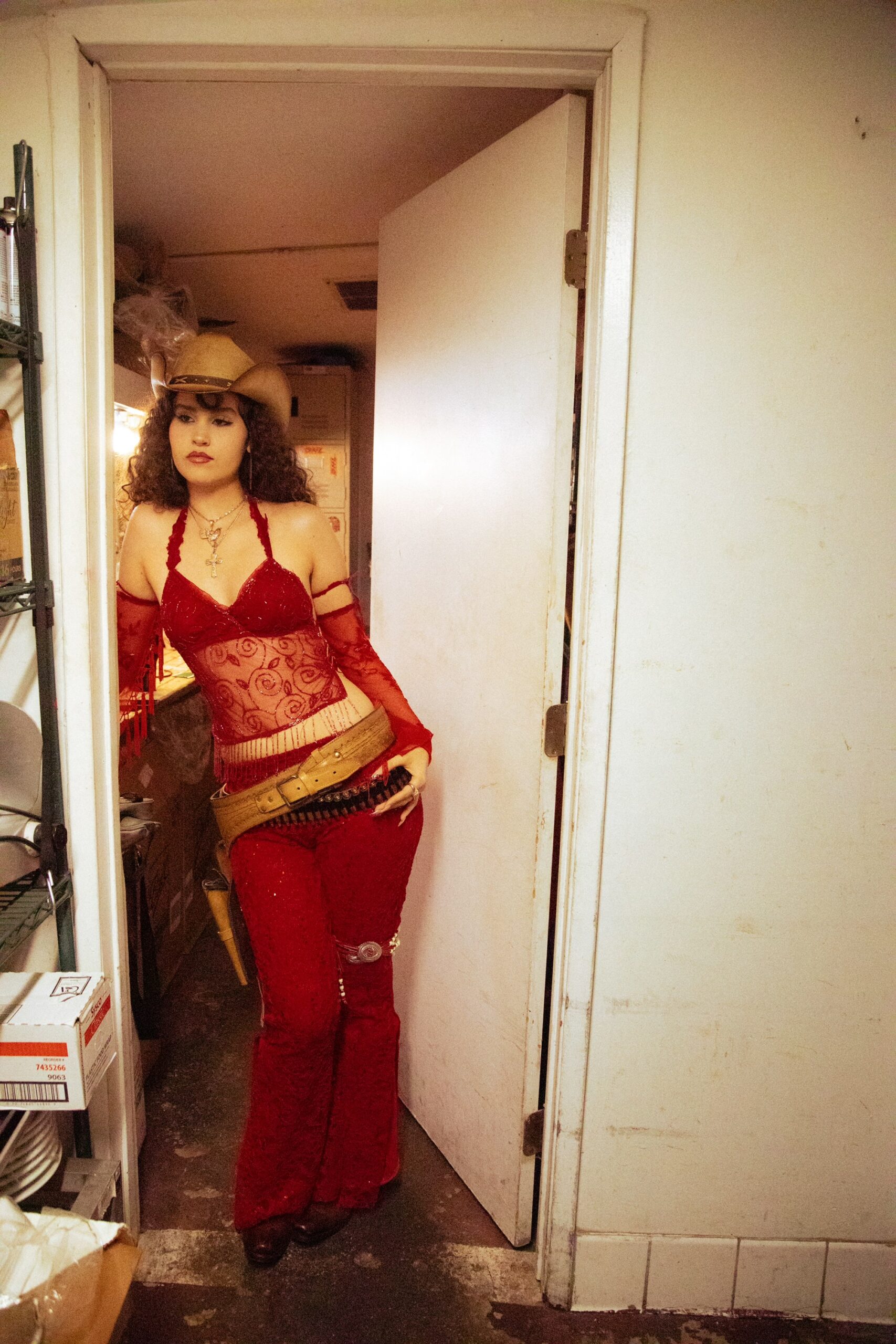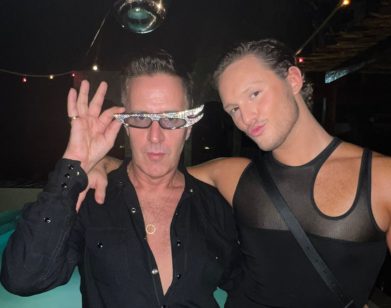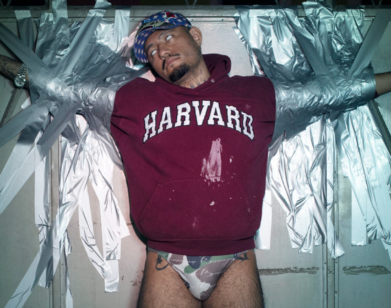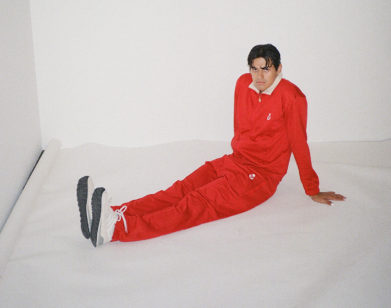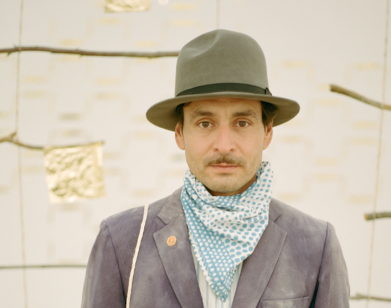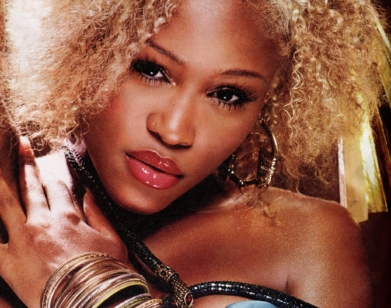TOUR DIARY
Meet Estevie, the Gen-Z Hitmaker Leading a Cumbia Renaissance
When I first heard Estevie, I knew she was the one. The 19-year-old’s squeaky-Spanglish voice immediately conjures visions of a baby Selena, but with a fresh, Gen-Z perspective that pulls from early aughts bubblegum pop stars like Gwen Stefani and Fergie. And with the recent explosion of Regional Mexican music, Estevie stands out as one of the leading women in the genre’s primarily male-dominated revival.
Look no further than her debut EP, Cumbialicious, a glistening sonic statement that brings the sounds of cumbia, norteño and neo-pop to a whole new crowd of young listeners. But it’s nothing new for Estevie. “I’ve been doing this for quite a bit,” the Beaumont, CA native tells me over Zoom. Having competed in the Mexican reality singing competition Academia Kids when she was just 11-years-old, then releasing a full-on banda album the next year, followed by a steady stream of charming YouTube covers, she clearly understands the value of hard work—just like all first generation Mexican-American kids.
With a recent string of headline shows under her belt, Estevie is ready for primetime. Last month, we hopped on a call to discuss being a “no sabo” kid, digital artifacts, and the future of Musica Mexicana.
———
IVAN GUZMAN: Are you on a high from your debut show last night?
ESTEVIE: I am. I still feel jittery from last night. I couldn’t leave because I always get really excited after a show. [Laughs] I’m just chilling today and taking a day off before I get back into it this week. You’re in New York, no?
GUZMAN: I’m in New York, but I’m from Houston, Texas. I’ve been so into the whole regional Mexican boom that’s happening this year, and you really stood out to me because your voice is so captivating and it’s a very male-dominated genre.
ESTEVIE: There definitely have to be more females in the Mexican regional space. I love that I’m able to represent that and I just love regional Mexicano and cumbia, it’s what I grew up with. This whole movement with regional Mexicano is crazy. Growing up, I feel like people would just push it aside, but I’m happy that it’s finally getting its moment because it’s a beautiful genre.
GUZMAN: And this is your first real string of live shows, right?
ESTEVIE: I started touring with Ivan Cornejo in February, and that was my first tour. And then I did Eddie Zuko. I was just opening for other artists and doing little festivals, but I’ve never had my own headlining shows. I still can’t believe that I have my own shows. It just doesn’t feel real. I love performing live and being with the actual fans. It’s so different from making music in a studio. The energy that you get off of the people is indescribable. It’s so beautiful when an artist and the audience can connect and just become one. I’m really happy that I got the opportunity to live that, and I wasn’t expecting it to be so soon.
GUZMAN: Your parents must be so proud.
ESTEVIE: My parents are so involved with everything. I literally couldn’t have done any of this without them. They’re always running around and helping me with all the technical things and business. And I don’t know if you saw any pictures of yesterday, but my mom killed that shit!
GUZMAN: I know. I saw you jumping into the crowd and dancing, and I feel like that’s such a huge aspect of this genre as it’s best heard live.
ESTEVIE: Definitely. There’s a big difference when there’s a live band. That was the most important thing for me, even though I still have some tracks behind. I wanted it to feel like it was live and real and feel the vibrations of the instruments. When I feel that personally, I want to get up and start dancing. And when I got into the audience to dance, I was actually covering a song, “La Casita,” which is a song that makes everyone want to dance and sing the lyrics. After that, I feel like people got more into the whole set and started getting a little more loose.
GUZMAN: It was so good. Obviously, the first comparison that comes to mind for people is Selena, but I’m obsessed with this mixture of Selena meets Gwen Stefani meets Lana Del Rey. What were your inspirations growing up?
ESTEVIE: It’s funny that you say Gwen Stefani because I adore her. She’s one of my biggest influences, and she actually has inspired a lot of the music I’ve been making recently, especially Cumbialicious. A lot of 2000s pop really inspired the EP. But I always say there’s two sides of music that I grew up listening to. On one side was the cumbia, the regional Mexicano, the mariachi, the banda. But then there’s this other side of me who grew up listening to everything that was playing at school, pop female artists like Mariah Carey and Britney Spears and Fergie. On the Mexicano side, my biggest influences would be Rocío Dúrcal, Linda Ronstadt, Ana Bárbara, and Alicia Villarreal. Those were the top four female artists that helped me develop into the artist that I am today.
GUZMAN: I was also on your YouTube channel going back to all the old videos of you as a little kid singing Selena and they’re so good. I love that you kept that on there because they’re like digital artifacts that made you who you were. I know you also did that show in Mexico, Academia Kids.
ESTEVIE: I’ve been doing this for quite a bit. I’d say I started my career when I was about 11, and now I’m 20, so almost 10 years. It’s been a really good journey, and if I hadn’t done certain things, I wouldn’t have reached this point to where I’m pretty happy about everything that’s going on with me artistically. It definitely took years to figure out what direction I wanted to take and who I wanted to be. Academia was where everything began. I was 11 on that show, and I was like, “I have to go to Mexico City.” They would call me the gringuita because I was an “no sabo” kid back then. Those kids bullied me to learn Spanish, and that’s how I learned the hard way. I always hated the covers that I did of the old Mexican songs on my channel, but I was listening to all of that recently and like you said, it’s history, and it’s cool that people can also see where I came from.
GUZMAN: It’s the authenticity.
ESTEVIE: I did a whole banda album when I was 12 on Spotify, so when people are listening to my new music and one of those songs comes up, it’s funny.
GUZMAN: Did you grow up on the internet?
ESTEVIE: Oh, yeah. When everyone started vlogging, I had my little moment. But those things I did hide because I’m not a YouTuber. I was actually in a YouTube content creation house when I was 15, kind of like Team 10, so I actually got a lot of my following from those days. That really helped me, too, because I went on tour through South America and I would perform to crowds of 10,000 people. I was the singer of the group. That was just to grow my audience, but in 2020, I started to focus and release music every month. That’s when I discovered how much I loved cumbia.
GUZMAN: I feel like a lot of young artists started during the pandemic. You were what, 17?
ESTEVIE: 17, 18. It’s crazy. It definitely helped me get that focus and move away from the YouTube era. At that time, I had a really big empty closet, and I made a little home studio. That’s where I played around with a lot of things. I was trying reggaetón and I used to sing a lot in English doing hyper pop and crazy rock ballads. I was just trying everything, but nothing felt like it stuck to me until cumbia. I was actually going back on my Academia videos and I found a video of Alicia Villarreal performing “Ay Papacito.” That’s one of her biggest songs, and that’s the song that made me fall in love with cumbia. I was just blown away like, “Why aren’t people making more music like this?”
GUZMAN: I have this crazy fixation on early 2000s reality singing competitions. American Idol was my thing. My Instagram handle is “americanidolseason7” and I was obsessed with David Archuleta.
ESTEVIE: I was obsessed with going to all of those TV shows. I went to so many, and that’s where I would make all my friends. Some of those friends that I met back then are some of my best friends today.
GUZMAN: Did you go to school?
ESTEVIE: I was homeschooled from middle school and high school because I had to travel around a lot. I don’t regret it because I’ve met so many people that do the same thing as I do, and I never missed out on socializing with anyone or experiencing anything. I’ve lived a life that not a lot of people get the opportunity to live, and I’m really grateful for that. My family would be like, “Why don’t you take a break from music and enjoy your childhood?” But I don’t regret any of it.
GUZMAN: Going back to YouTube, I feel like regional Mexican music is weirdly tied to YouTube culture and the Gen-Z L.A. vlogging world. I don’t know if you know the Agushto Papa podcast and that whole scene.
ESTEVIE: I was actually on that podcast. I definitely feel like the Mexican American community is becoming tighter. That makes me happy because the last couple of years, we were not really strong, and people really didn’t pay attention to the Mexican American community. It was always just Mexico, but Mexico Americanos are so different. It makes me happy to see everyone come together and support Mexican American artists. We got to help out the raza.
GUZMAN: I wonder why it’s happened within the past year. What led up to this huge boom?
ESTEVIE: It started with all the corrido tumbados and all of the kids who started a new wave of this new genre. I remember in 2020 a lot of people would hate on it, and Mexicans in Mexico hated it. But all of the kids who grew up listening to regional Mexicano music from their parents wanted to make it their own. For example, Pedro from Eslabon Armado is one of the pioneers of that genre, and I was actually able to do a song with him on his album, Nostalgia. Slowly, people started accepting it more and more, and it just started growing.
GUZMAN: Do you think it’s going to continue to get bigger or is it just a trend?
ESTEVIE: I think it’s going to be like what happened with reggaetón, where it became a mainstream thing that people don’t think twice about. It’s just a mainstream sound. I also feel like people are just going to start experimenting more with it, not only doing the corridos, but also trying out the other genres in the regional Mexicano space. I feel like mariachi and all of those more traditional sounds are going to come back. I don’t know. I might bring it back with autotune. [Laughs]
GUZMAN: That’d be interesting. What’s the craziest fan experience you’ve had?
ESTEVIE: When I was in Argentina, I was scared for my life, because the fans over there are on another level. They would wait outside of the hotel for me and the other members of the group, and they would literally sleep there on the streets at night. It was crazy. But one day, I was walking out and they were just coming on top of me. At one point, I felt like I wasn’t even walking and I was just floating in between everyone. I literally thought I was going to die.
GUZMAN: Oh my god.
ESTEVIE: That was in the content house. But my fans now, since I changed my name, are very chill. I love them. I haven’t had any crazy ones recently.
GUZMAN: What are your fans called?
ESTEVIE: I call them chiquititos because I always say that in my songs. But like a name name, I’m still waiting for it to come naturally.
GUZMAN: What’s your favorite Mexican spot in L.A.?
ESTEVIE: Ooh, Sonoratown in downtown L.A. They have the best tacos de harina. In Mexicali, where my family’s from, they make the best tortillas de harina, and that’s the only place here in L.A. where I feel like they’re similar. So whenever I’m in Santee Alley, it’s super close, I stop for some taquitos.
GUZMAN: I’m going. What’s up next for Estevie?
ESTEVIE: Definitely more music. I’m going to be making a couple more songs for a Cumbialicious deluxe. Maybe some more shows coming soon. Just stay tuned, it’s exciting.
GUZMAN: Thank you so much.
ESTEVIE: No, thank you.

